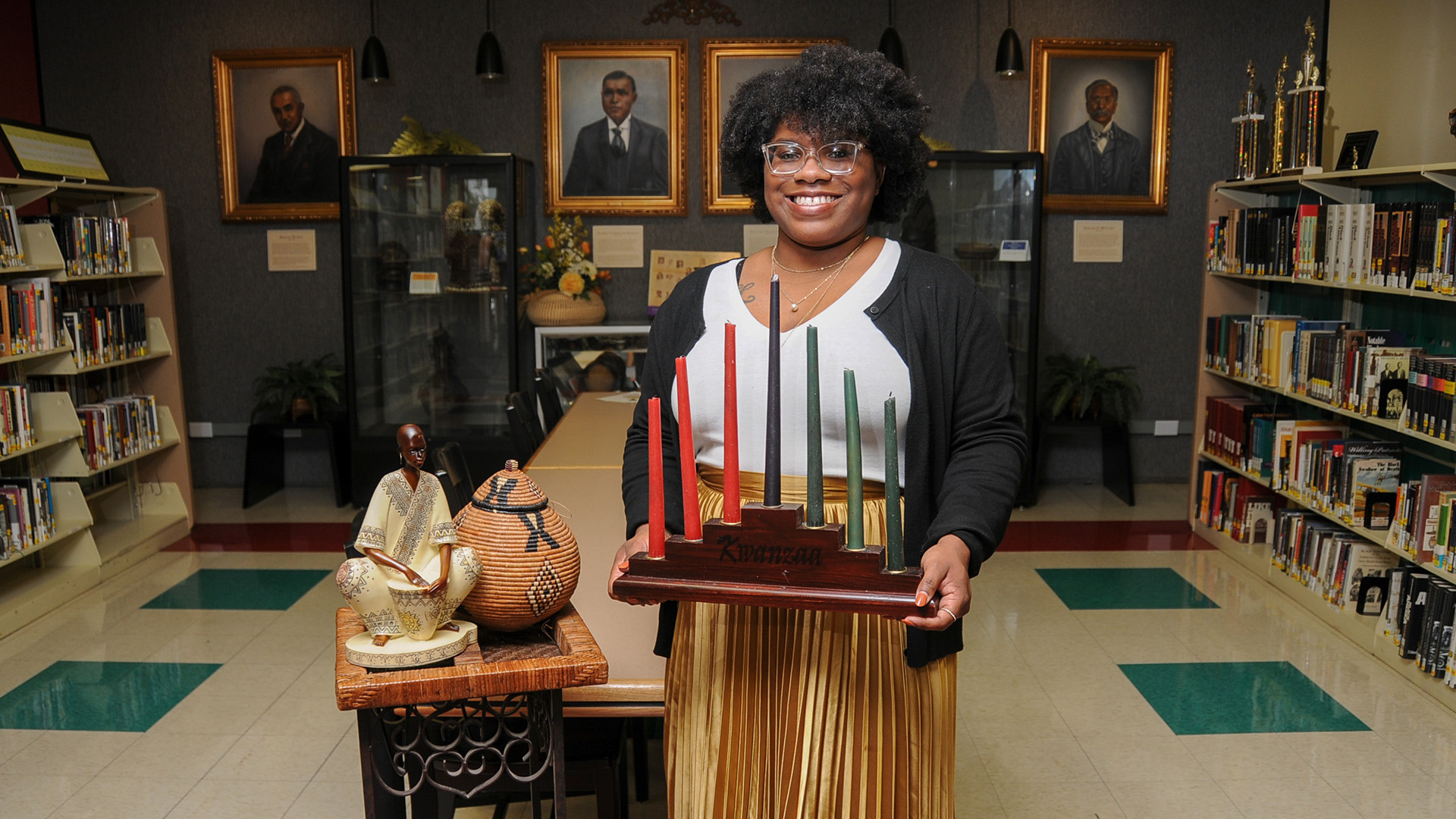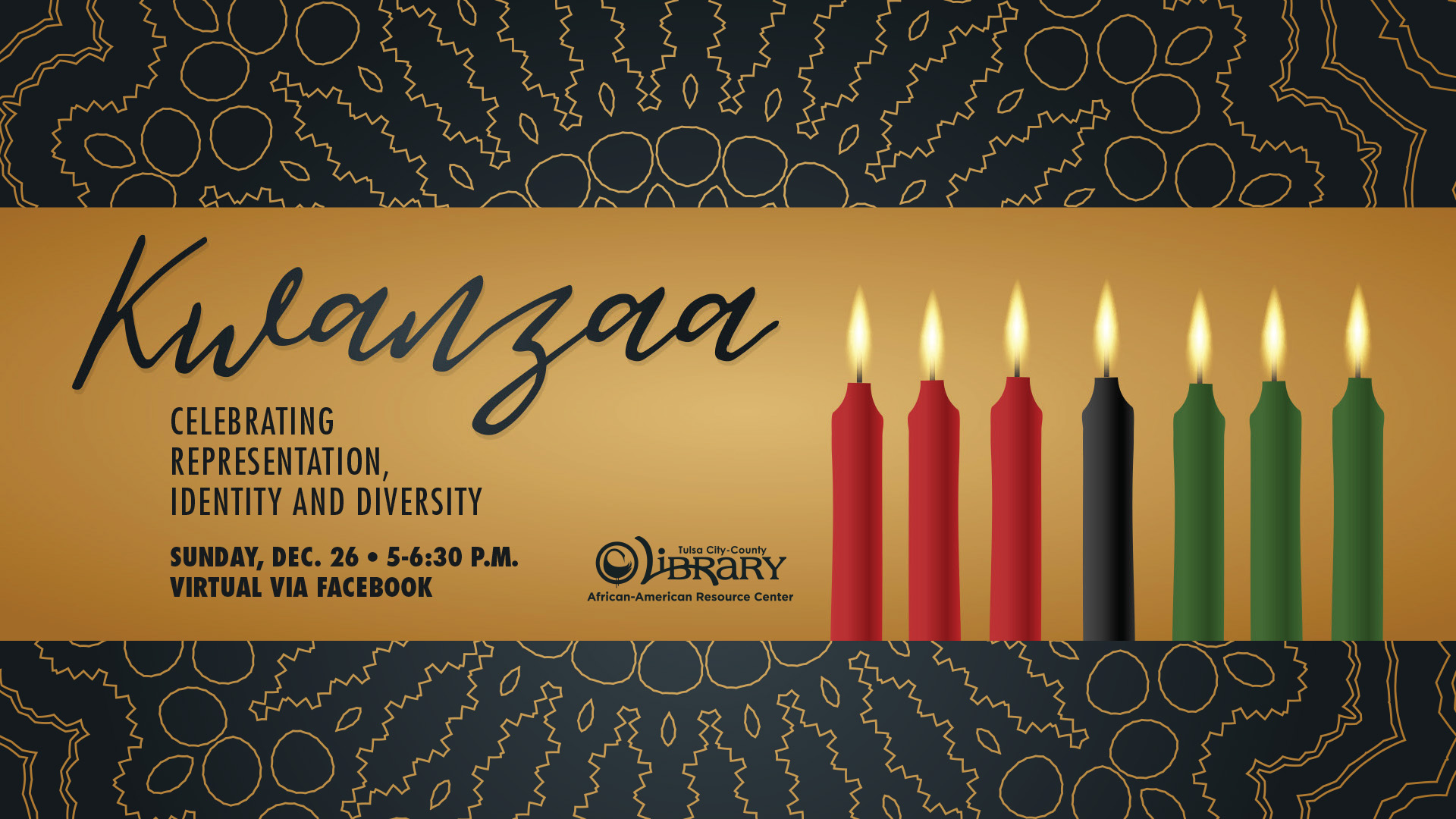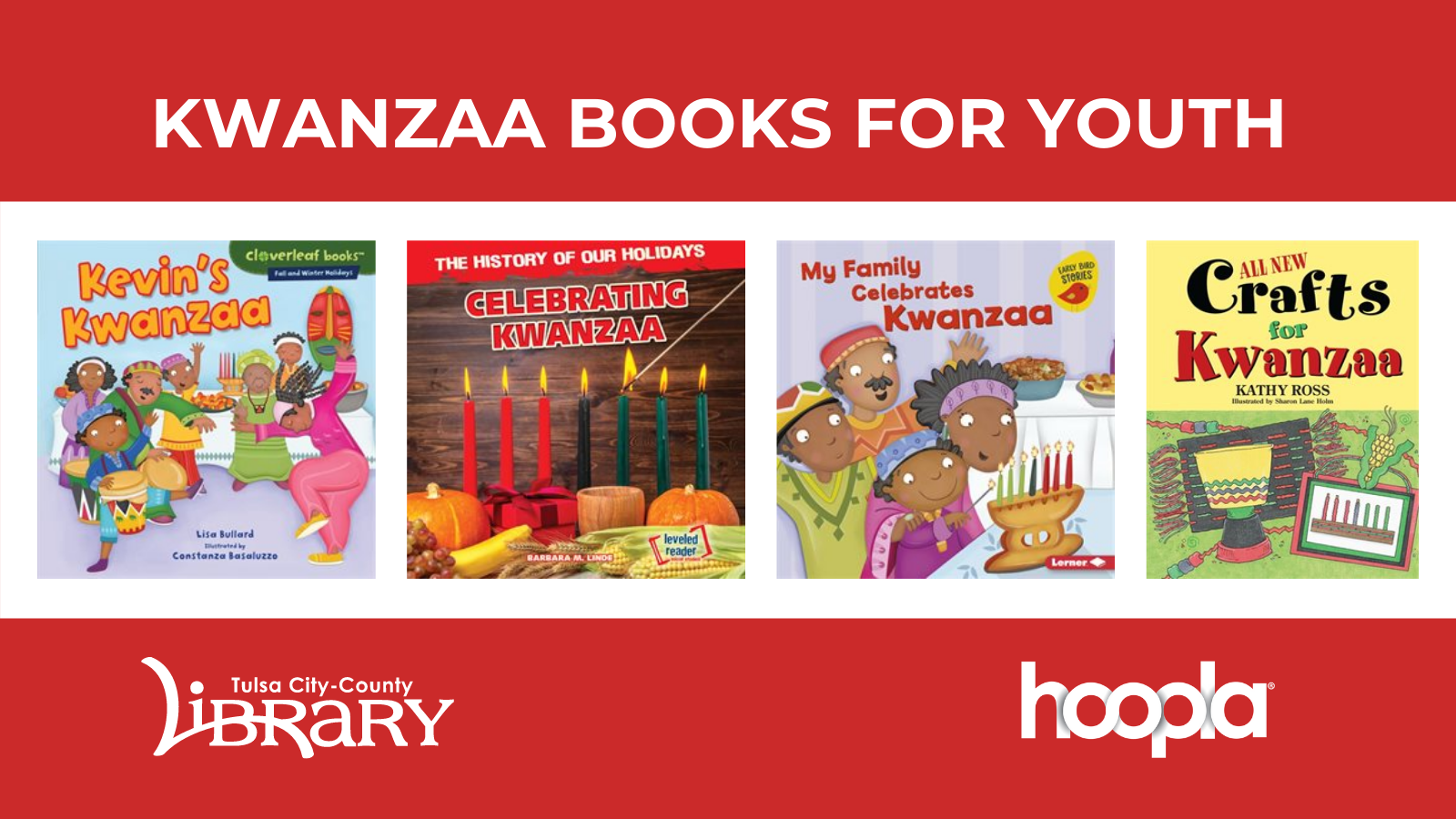CELEBRATING KWANZAA
by Larissa McNeil, African-American Resource Center coordinator

My family did not celebrate Kwanzaa growing up. I grew up in a Baptist household, so December was firmly delegated to celebrations surrounding the birth of Christ. In grade school, despite growing up in predominately African American neighborhoods, Kwanzaa was only taught tangentially, just another in a list of holidays celebrated in that month. It had never felt like it was particularly for me, though, a holiday that had seemed to me like one geared toward those with a lot more understanding of, and security in, their place in society. In short, I think that I was afraid to embrace it.
I should not have been. Kwanzaa, at its most basic level, is about community. When Dr. Maulana Karenga invented Kwanzaa in 1966, African Americans were in the middle of fighting for the right to exist as humans in a country content to treat them as second- and even third-class citizens. In the midst of turmoil – protests, both nonviolent and violent; school integrations; senseless killings – Dr. Karenga understood the need for community, for a celebration of family and culture within the diaspora. It was initiated as way to build empowerment, strengthen ties to one another and to explore pieces of various African identities. And what I find to be an important part of this is that it is nonreligious, which means that anyone of the African diaspora, regardless of their faith, can come together to explore what makes Black people in this country singularly unique.
It has only been in recent years that I have understood the power of Kwanzaa. While created for African Americans, the holiday has its roots in the Ashanti and the Zulu cultures, particularly regarding the celebrations of harvest. Kwanzaa ceremonies can include singing and dancing, the use of African drums and large traditional feasts. The seven principles of the holiday – unity (Umoja), self-determination (Kujichagulia), collective work and responsibility (Ujima), cooperative economics (Ujamaa), purpose (Nia), creativity (Kuumba) and faith (Imani) – provide a basis for the celebration, each highlighted on a different day, starting on Dec. 26 and ending on Jan. 1. These principles give space for people to dig deeper into the places they live, to learn about who else lives and works in the neighborhoods, and to make an effort to build through collaboration and creativity. I truly believe this is where the power of Kwanzaa lies: in being able to recognize the capabilities, hard work and purpose of those around, and in being able to look past oneself and see the community that is inherent to the culture.
Books about Kwanzaa
For adults:
-
Kwanzaa: From Holiday to Every Day by Maitefa Angaza
-
Kwanzaa: A Celebration of Family, Community and Culture by Maulana Karenga
For kids:
-
My Family Celebrates Kwanzaa by Lisa Bullard and Constanza Basaluzzo (also available in Hoopla)
-
Seven Spools of Thread: A Kwanzaa Story by Angela Shelf Medearis and Daniel Minter (also available in Hoopla)
-
Let's Celebrate Kwanzaa!: An Introduction to the Pan-Afrikan Holiday, Kwanzaa for the Whole Family by Arielle Phoenix
-
OverDrive ebooks: Kevin’s Kwanzaa by Lisa Bullard and Together for Kwanzaa by Juwanda G. Ford.
-
Cloudlibrary audiobooks: Kwanzaa by Lisa Amstutz, Seven Candles for Kwanzaa by Andrea Davis
-
Hoopla has nearly two dozen ebooks and movies about Kwanzaa; find them HERE
Kwanzaa Event
Celebratnig Representation, Identity and Diversity | Sunday, Dec. 26 from 5-6:30 p.m. on Facebook (www.facebook.com/TulsaLibraryAARC and www.facebook.com/TulsaLibrary)
Join the African-American Resource Center virtually as we explore the seven principles of Kwanzaa through dance, song and spoken word. The program will feature a brief exploration of the history and purpose of Kwanzaa, cultural expressions by members of the Tulsa community and an exploration into how the guiding principles of Kwanzaa can show up in our lives. All ages are welcome to join the celebration!

